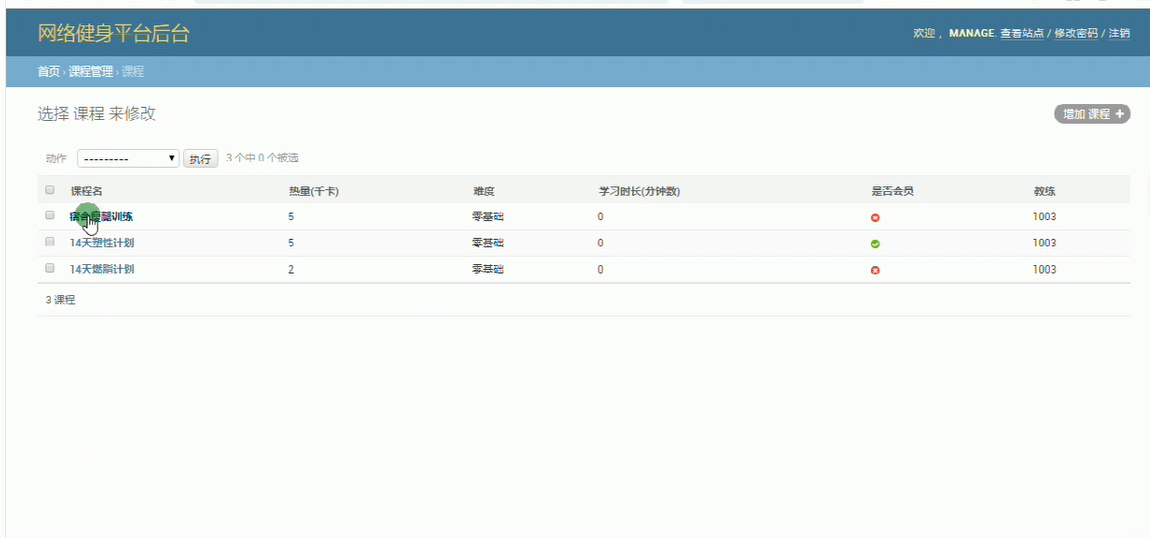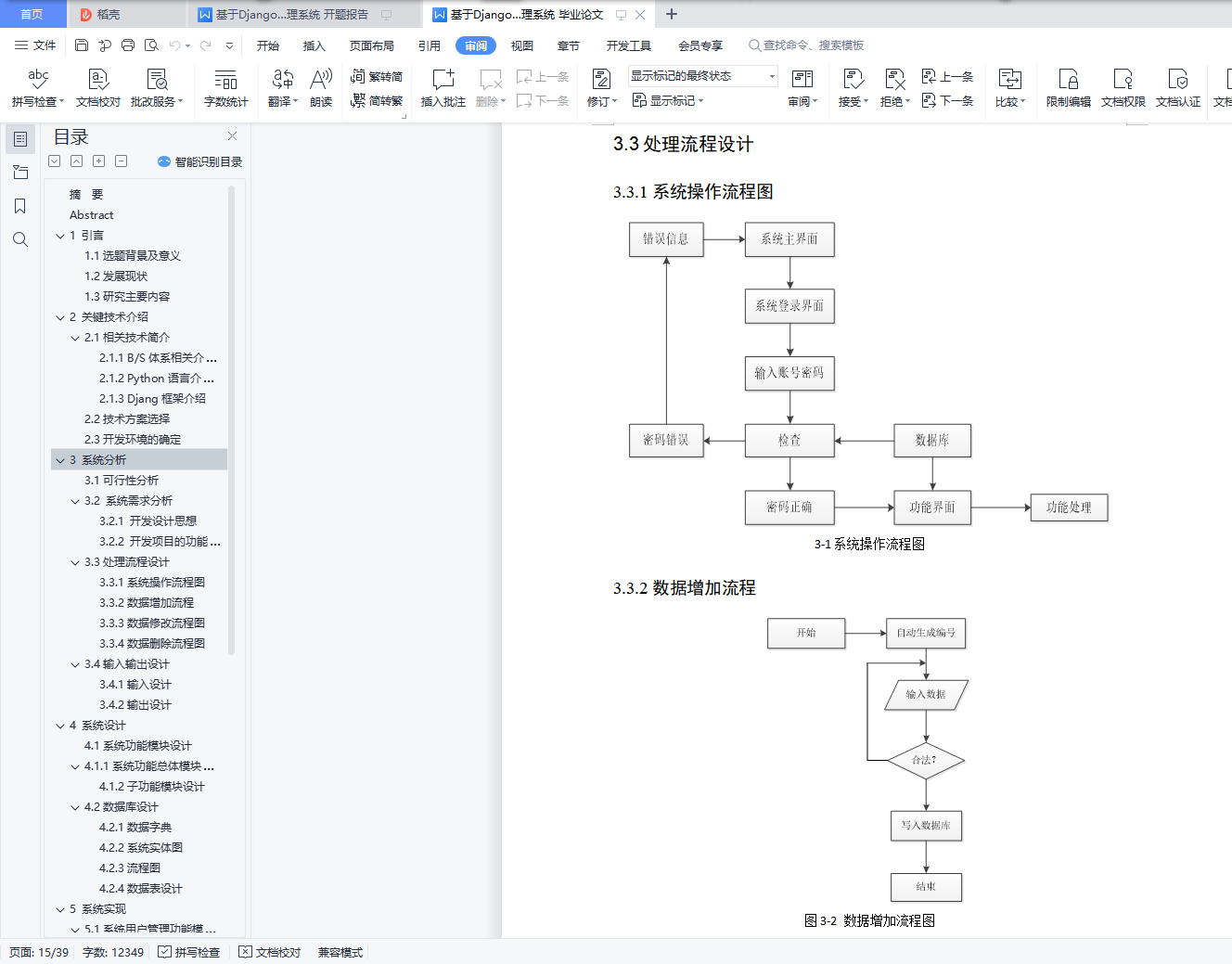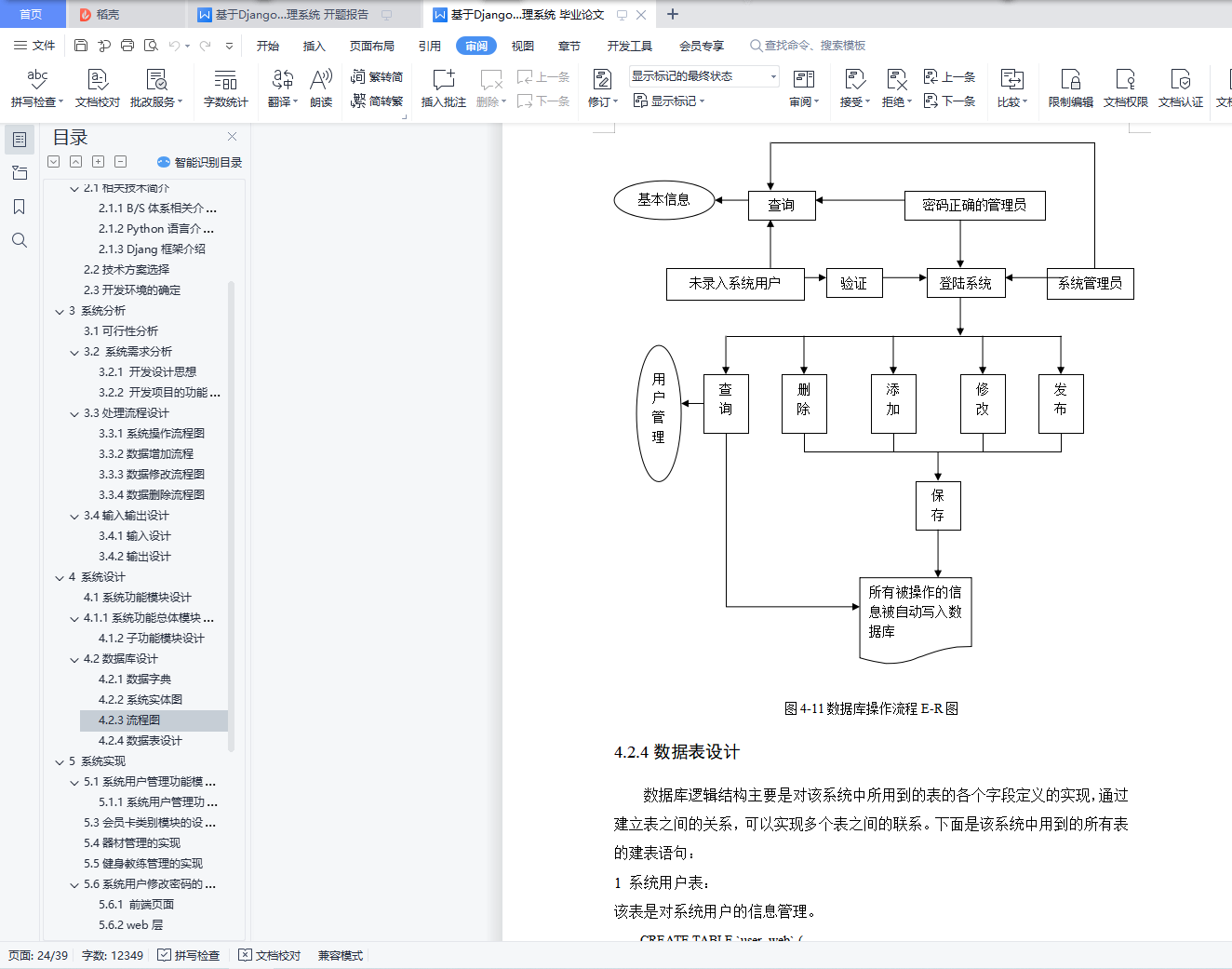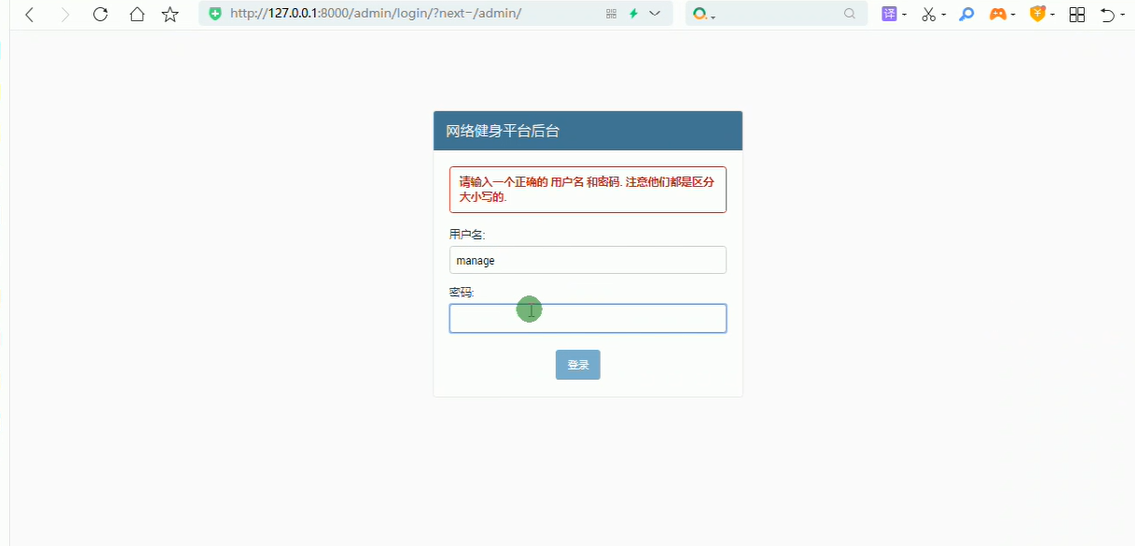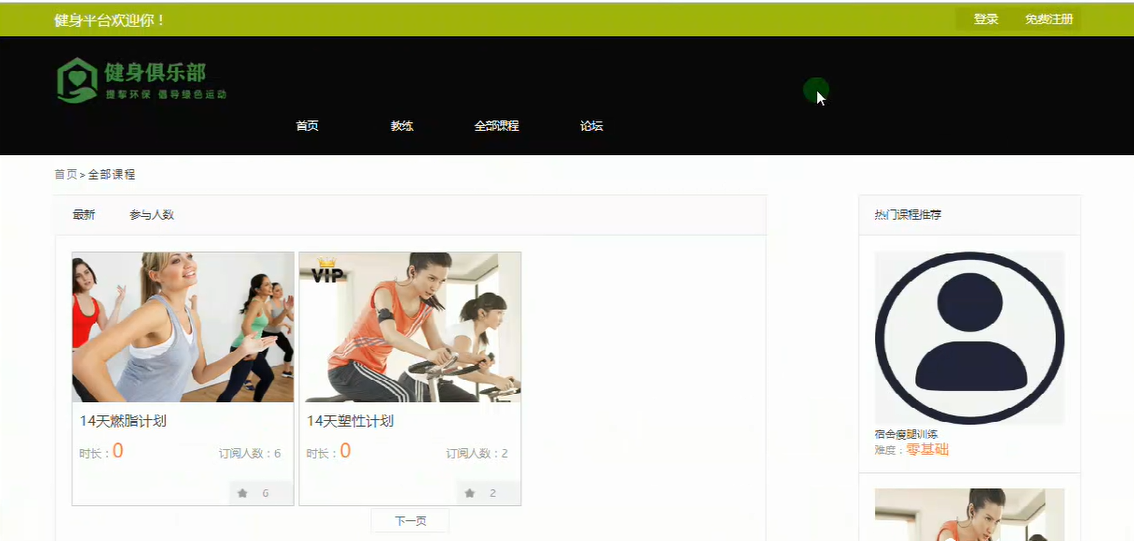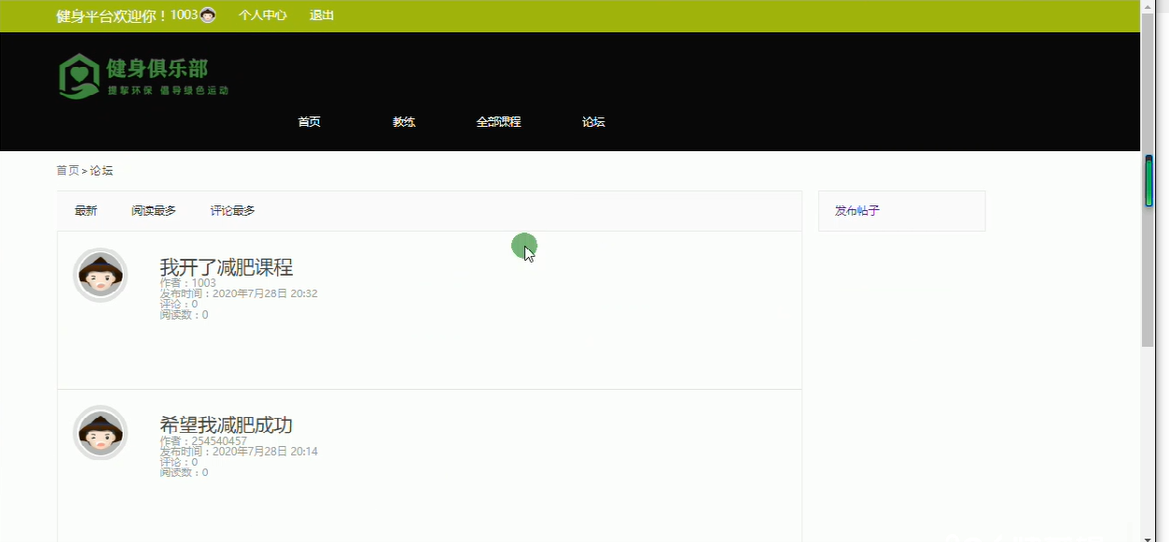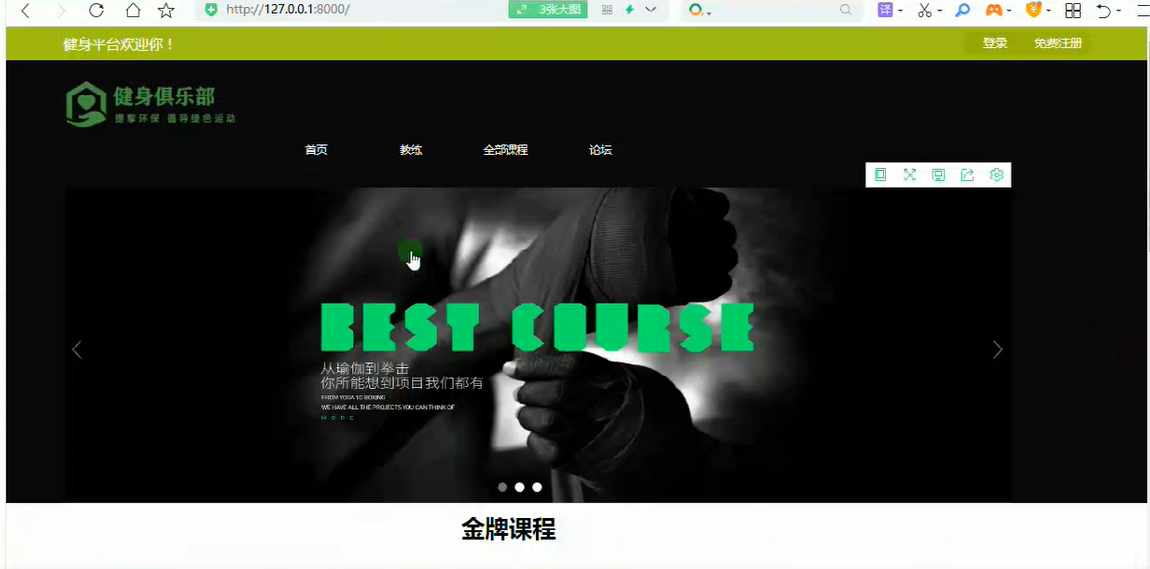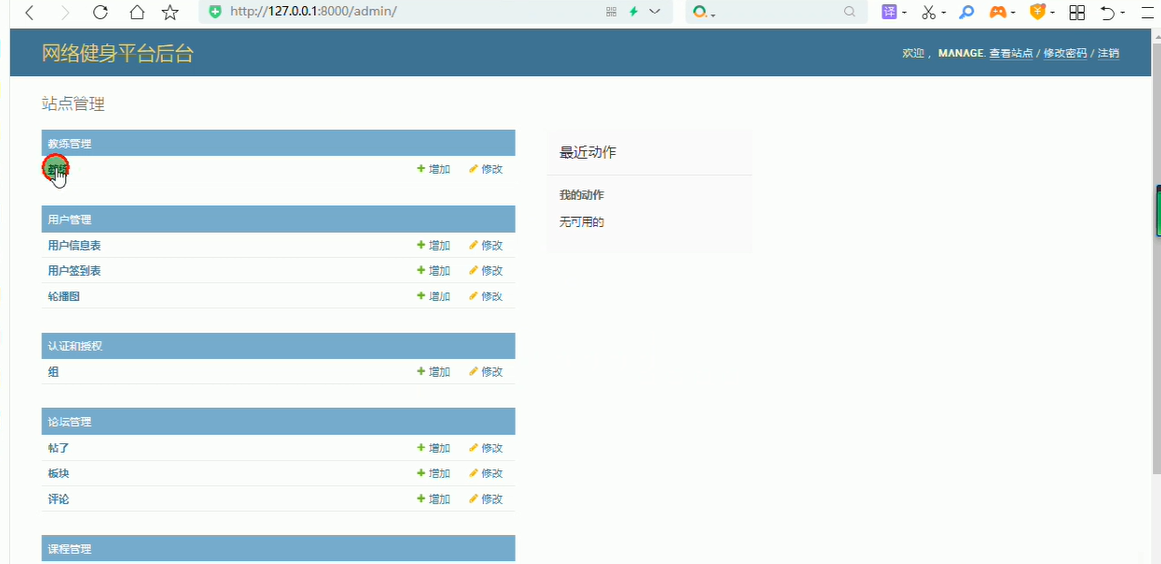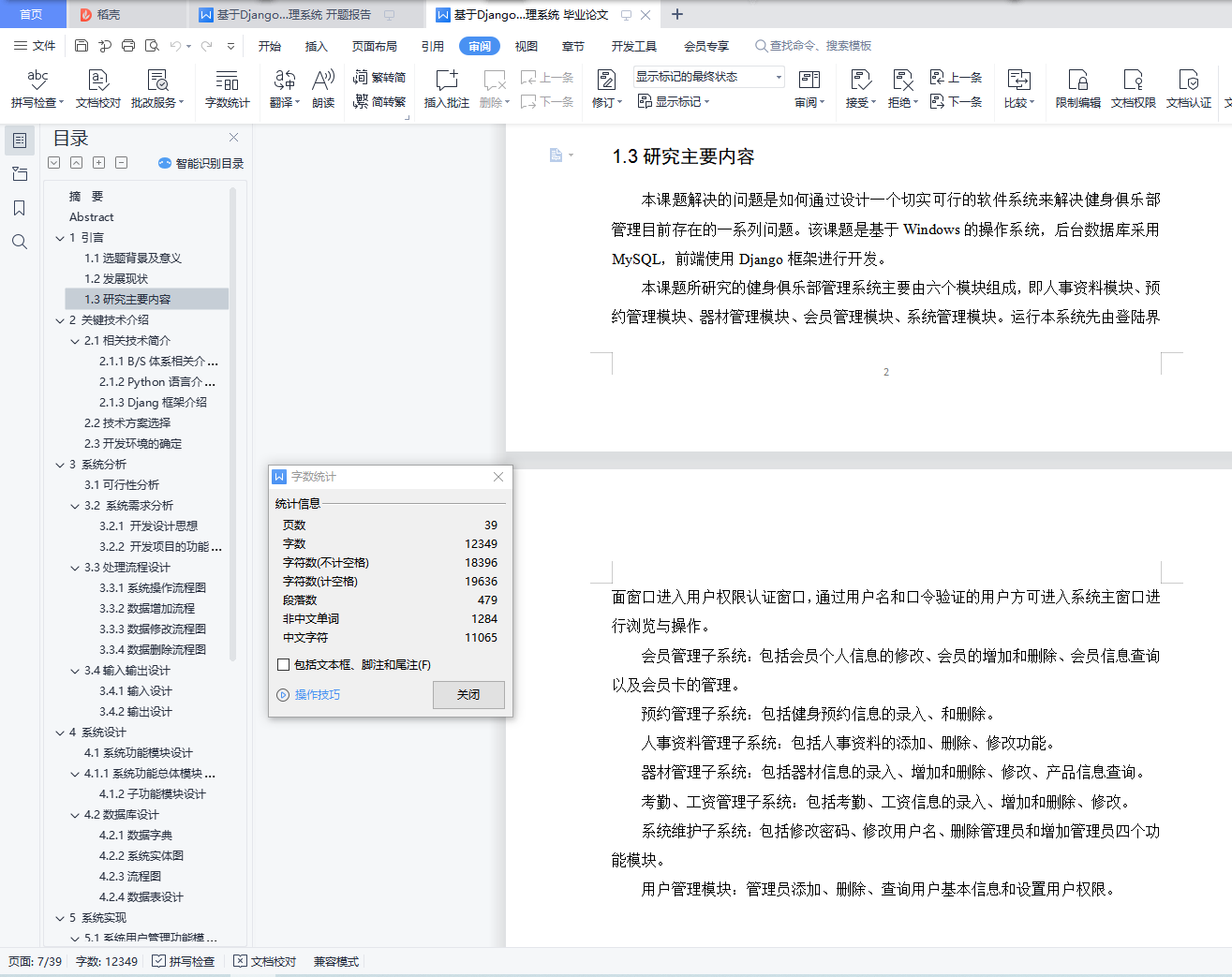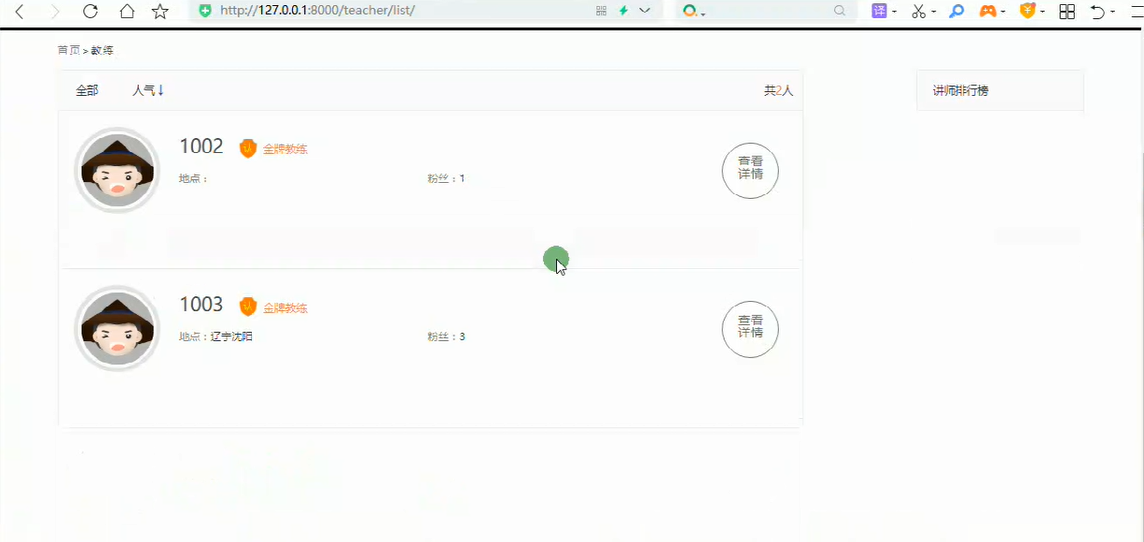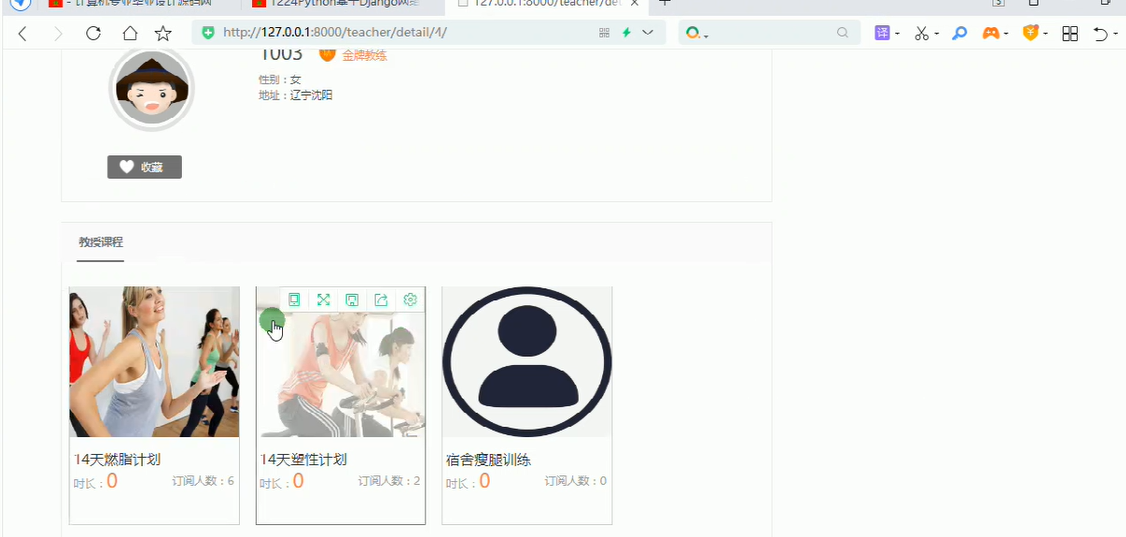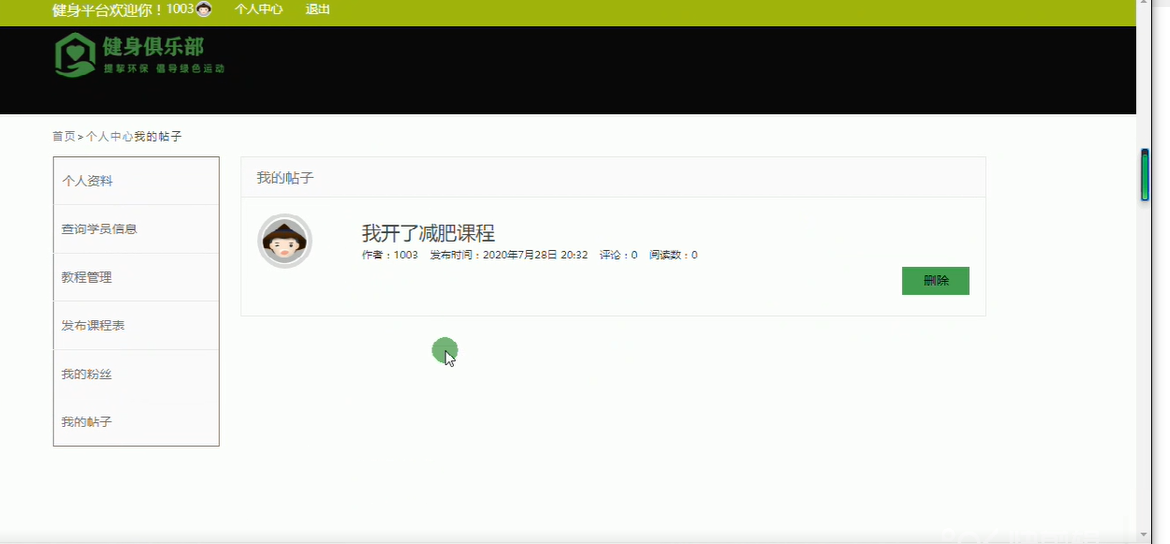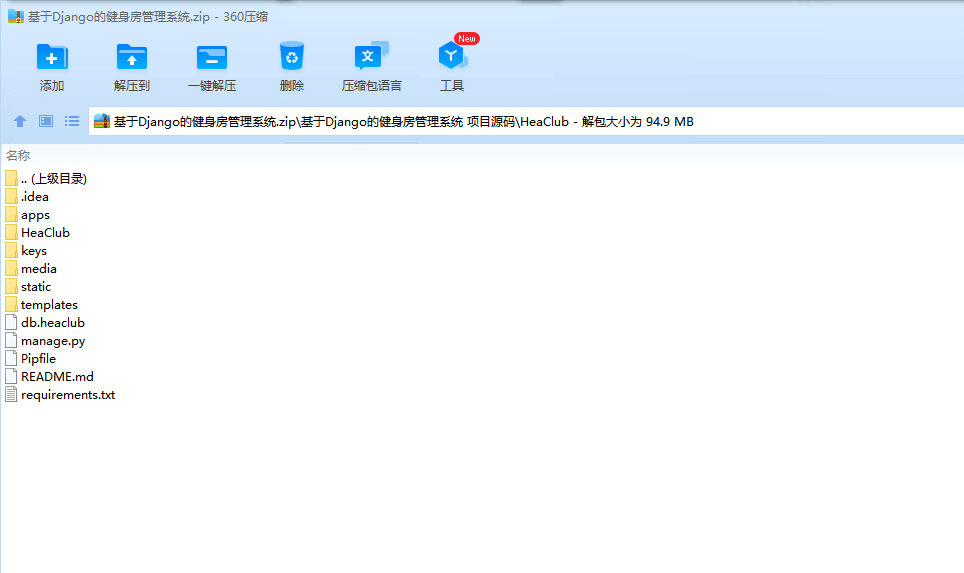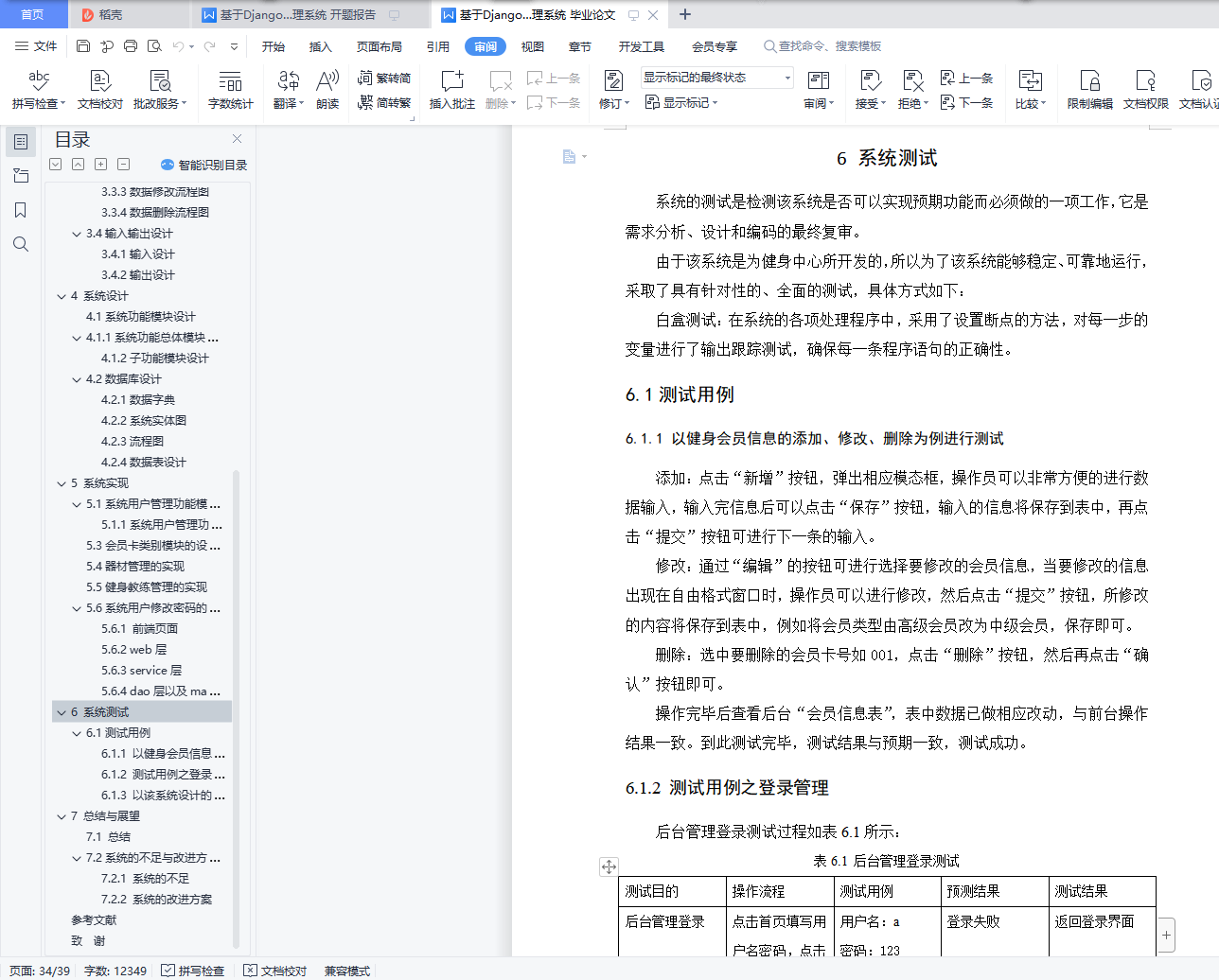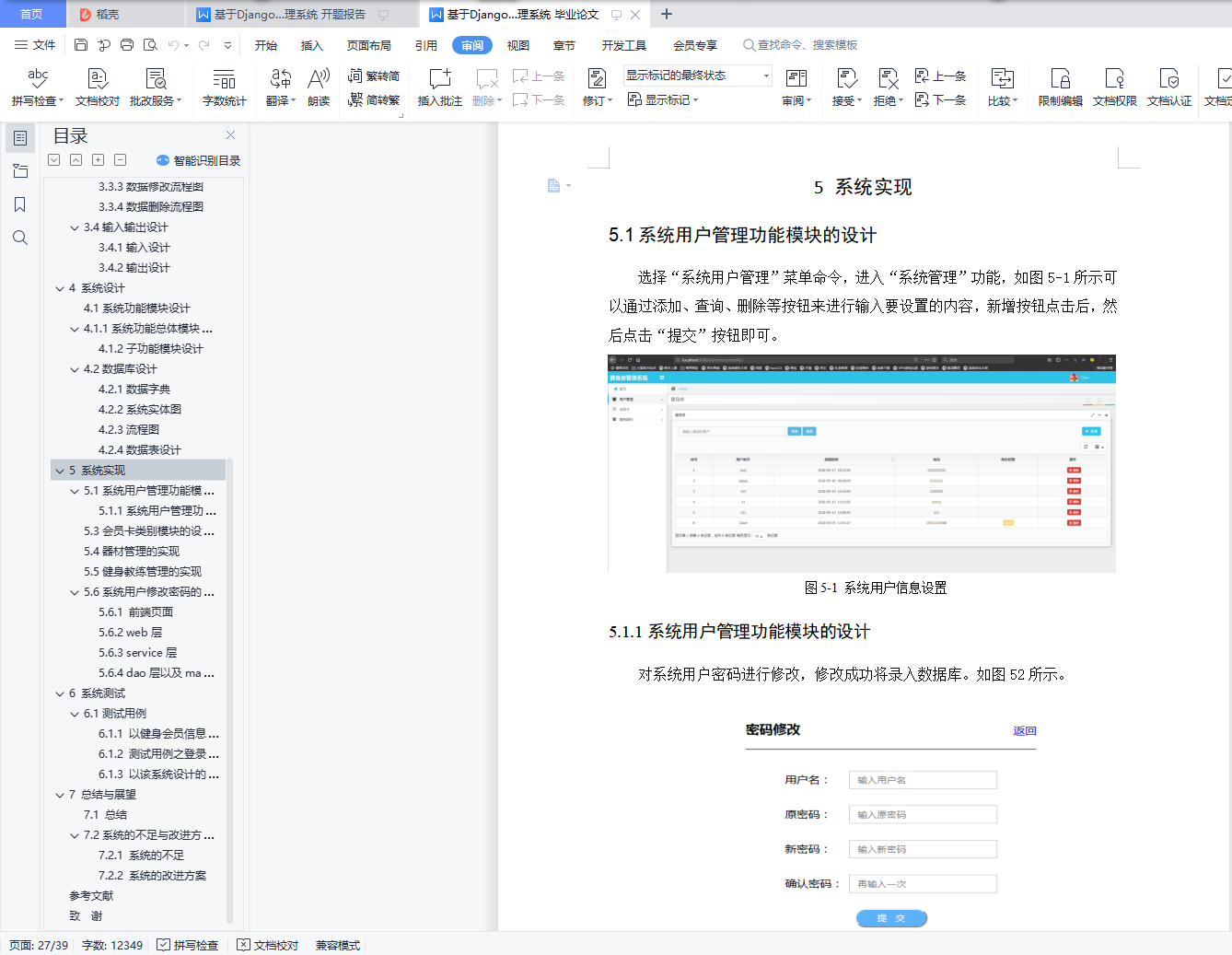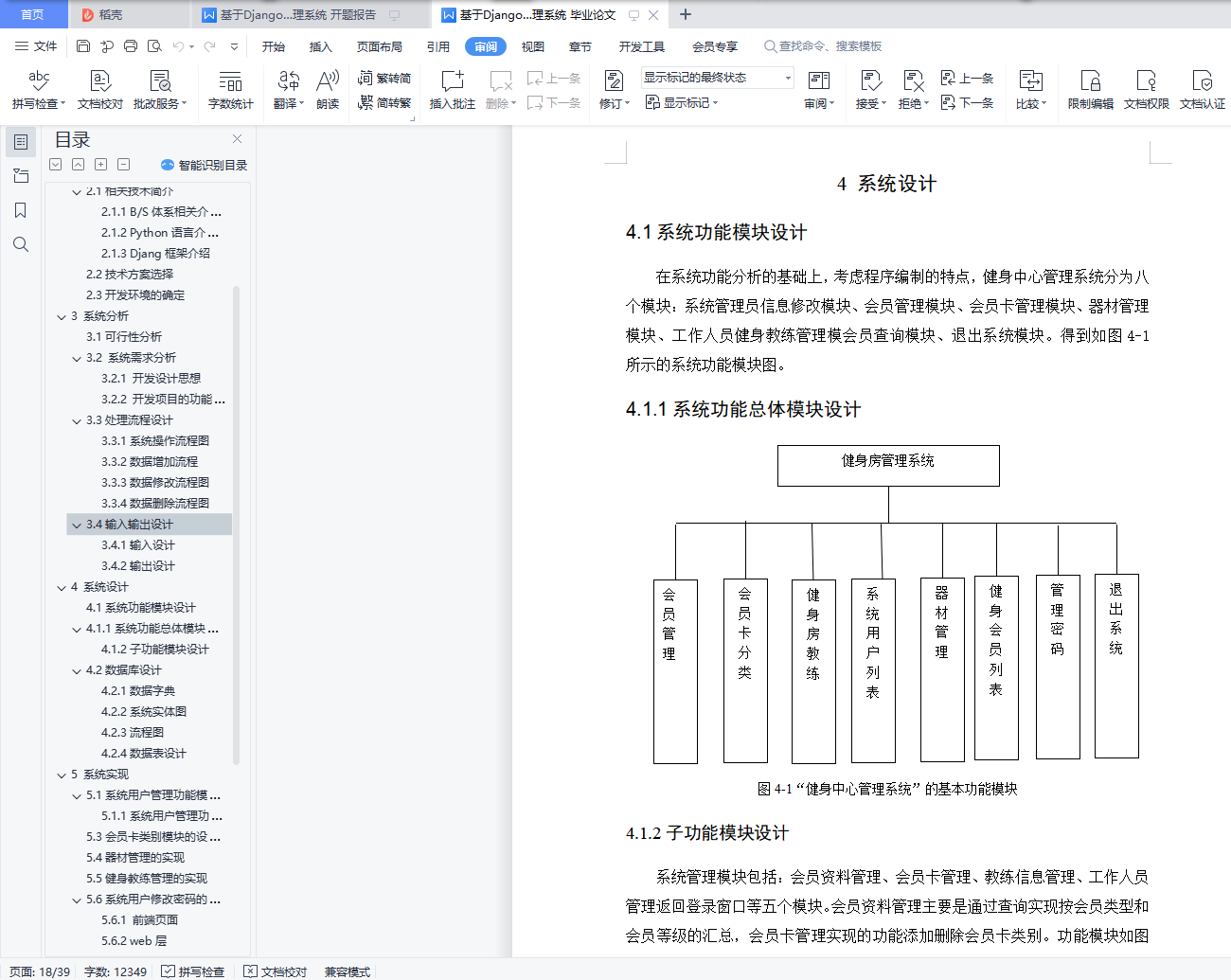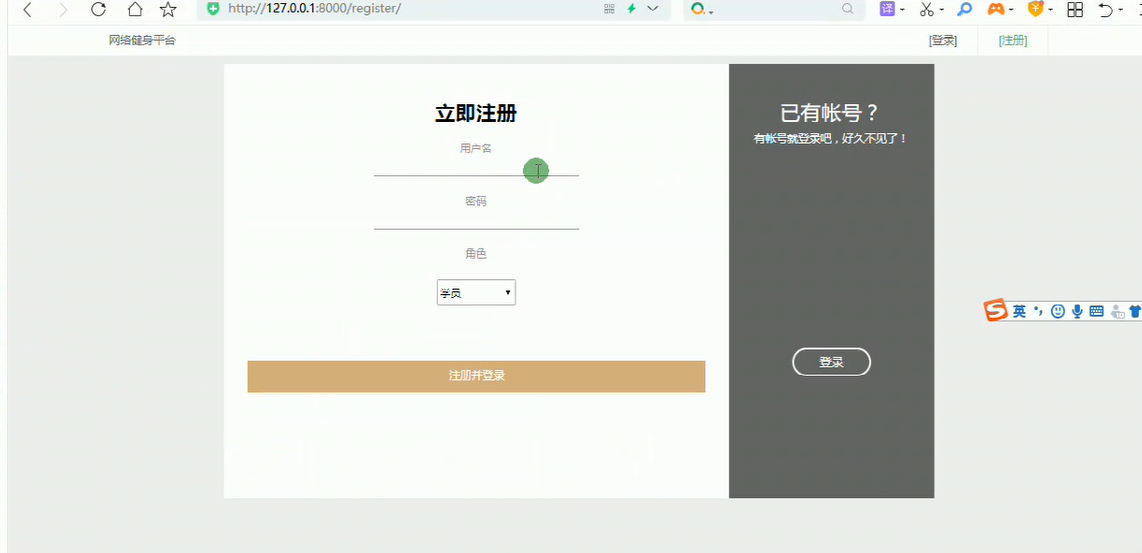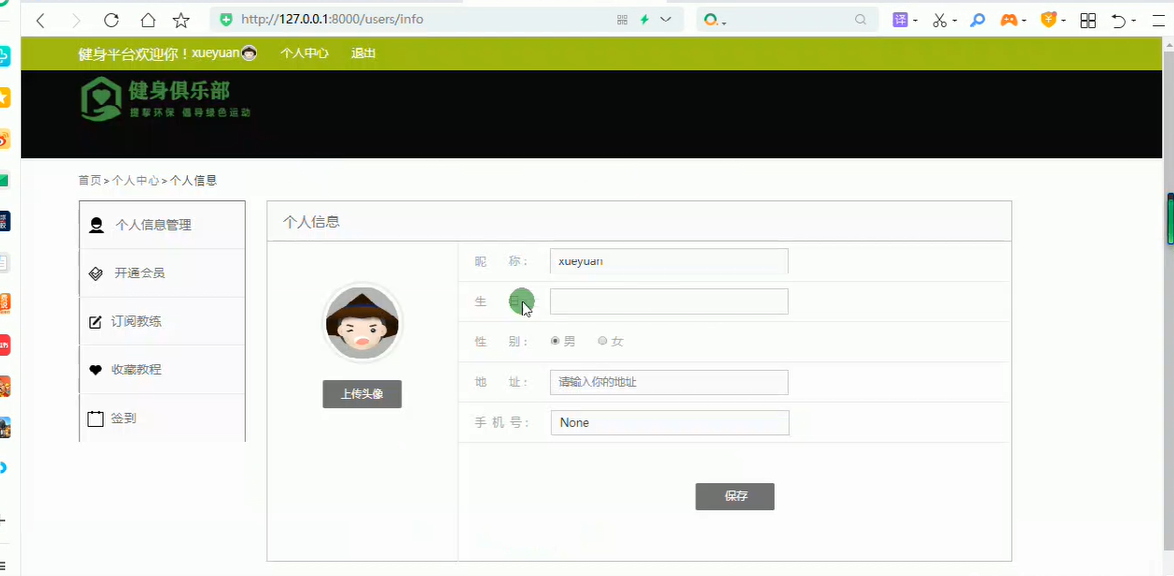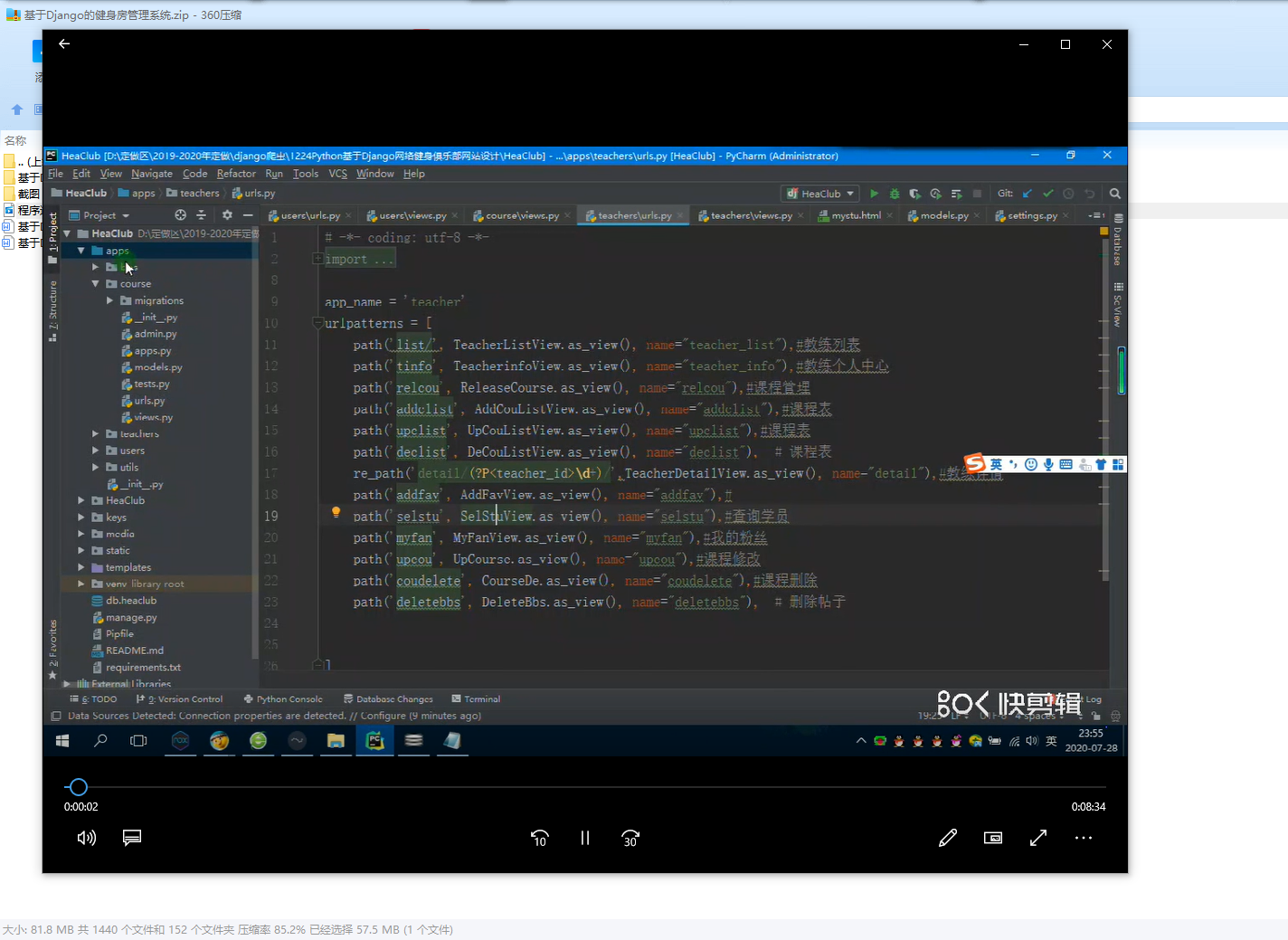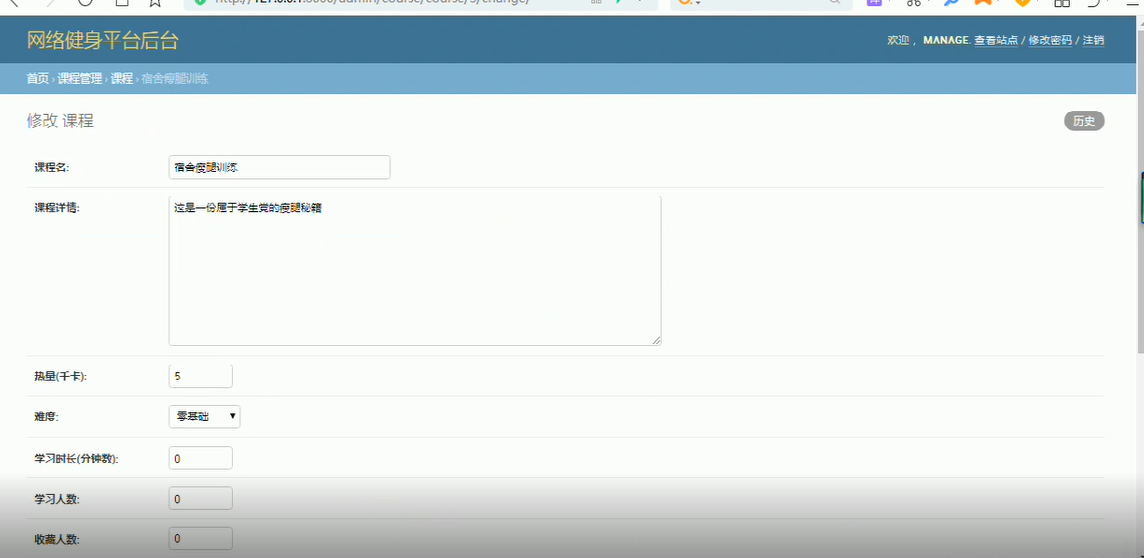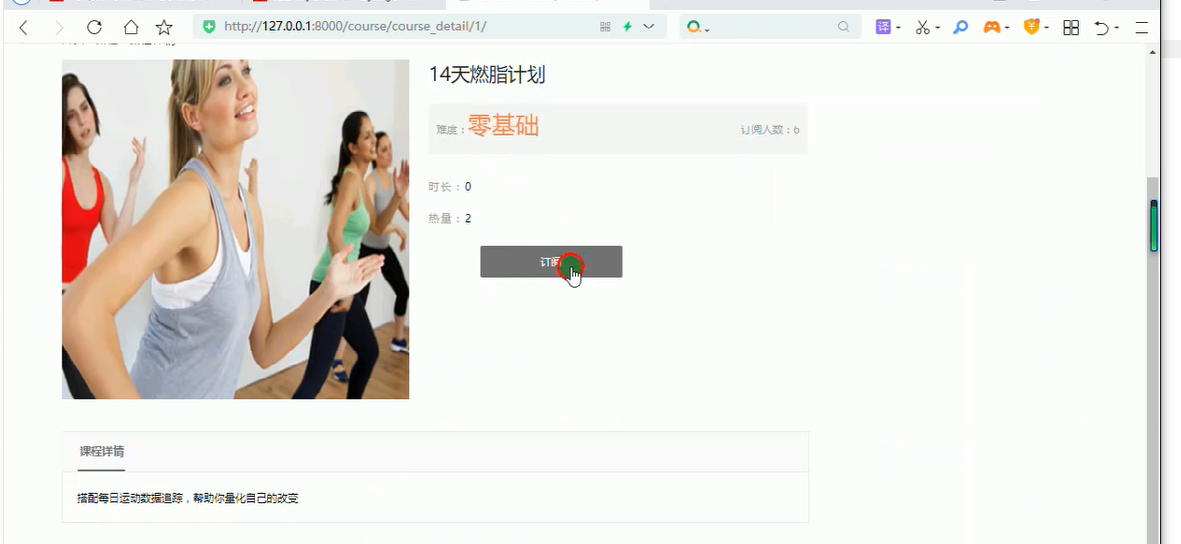摘 要
随着中国经济的发展,人们的生活水平不断提高。为响应市场的需求,各个城市的逐渐出现健身房并愈发专业化,便捷化。此时,一套成熟的健身房管理系统对健身房经营者和使用者来说至关重要。
笔者基于Django框架探讨,研究健身房管理系统。Django框架技术具备管理系统需要的直观性,便捷性和安全性。安全性在于全部的操作网页,数据在服务器中权限分层,无法私自篡改。便捷性在于网页化让使用者和管理者可以随时随地上网操作。直观性在于数据的统计和显示更加直观,准确.基于Django的管理系统从多方面提升了健身房管理的效率并增加了新的管理功能。
采用Django网页开发框架,Bootstrap响应式网页开发技术,Python语言和MTV的设计模式实现了健身房信息管理功能,首先介绍了健身网页健身系统的开发背景,并通过流程图等对该系统进行需求分析,确定了整个系统的开发设计思想和开发项目的功能需求,在此基础上,又通过业务流程图、功能模块图和E-R图对系统作了更详细的设计和描述。
关键词:健身房;管理系统;Django;Python;Mysql
Abstract
With the development of China's economy, people's living standards are constantly improving. In response to the needs of the market, the gradual emergence of gyms in various cities and more specialized, convenient. At this point, a mature gym management system is essential for gym operators and users.
Based on the Django framework, the author studies the gym management system. Django framework technology has the intuition, convenience and security needed by management system. Security lies in all operating pages, data in the server authority stratification, can not tamper with. Convenience lies in the web page so that users and managers can access the Internet anytime, anywhere. Intuitive lies in the statistics and display of data more intuitive and accurate. Django-based management system improves the efficiency of gym management and adds new management functions.
Using the Django web page development framework, Bootstrap responsive web page development technology, Python language and MTV design mode to realize the gym information management function Firstly, the development background of fitness Mini Programs fitness system is introduced, and the requirement analysis of the system is carried out through flow chart.
Keywords: gym; management system; Django;Python;Mysql
目 录
摘 要
Abstract
1 引言
1.1选题背景及意义
1.2发展现状
1.3研究主要内容
2 关键技术介绍
2.1相关技术简介
2.1.1 B/S体系相关介绍
2.1.2 Python语言介绍
2.1.3 Djang框架介绍
2.2技术方案选择
2.3开发环境的确定
3 系统分析
3.1可行性分析
3.2 系统需求分析
3.2.1 开发设计思想
3.2.2 开发项目的功能需求
3.3处理流程设计
3.3.1系统操作流程图
3.3.2数据增加流程
3.3.3数据修改流程图
3.3.4数据删除流程图
3.4输入输出设计
3.4.1输入设计
3.4.2输出设计
4 系统设计
4.1系统功能模块设计
4.1.1系统功能总体模块设计
4.1.2子功能模块设计
4.2数据库设计
4.2.1数据字典
4.2.2系统实体图
4.2.3流程图
4.2.4数据表设计
5 系统实现
5.1系统用户管理功能模块的设计
5.1.1系统用户管理功能模块的设计
5.3会员卡类别模块的设计
5.4器材管理的实现
5.5健身教练管理的实现
5.6系统用户修改密码的实现
5.6.1 前端页面
5.6.2 web层
5.6.3 service层
5.6.4 dao层以及mapper
6 系统测试
6.1测试用例
6.1.1 以健身会员信息的添加、修改、删除为例进行测试
6.1.2 测试用例之登录管理
6.1.3 以该系统设计的菜单中会员管理菜单项为例进行测试
7 总结与展望
7.1 总结
7.2系统的不足与改进方案
7.2.1 系统的不足
7.2.2 系统的改进方案
参考文献
致 谢

